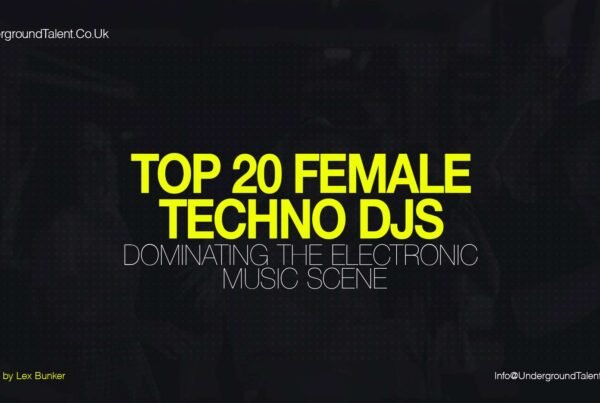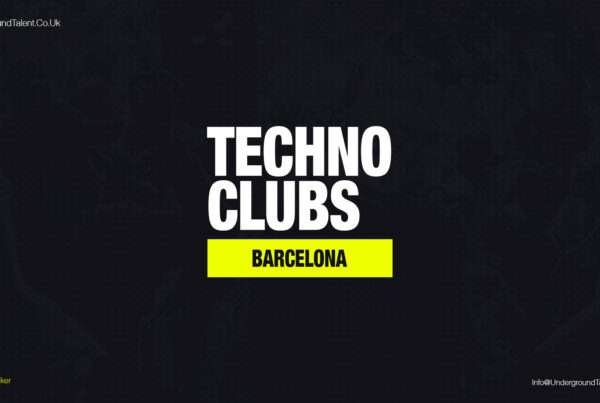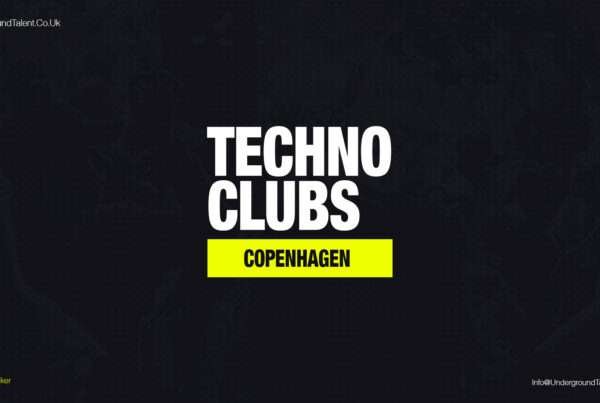
Introduction: What Drives Underground Music and Talent?
Underground music isn’t about fame. It’s about innovation.
The underground thrives where mainstream fears to tread. It’s raw, authentic, and unapologetic. While the mainstream plays it safe, underground artists risk everything for creative freedom.
They don’t chase charts, or chase something bigger—self-expression. They work outside the system, building movements, and not following trends.
In a world obsessed with fitting in, underground talent stands out by breaking the mould. It’s messy, chaotic, and brilliant all at once.
This article explores what makes underground music and performers truly unique. From DIY productions to secret venues, these artists shape the future by rejecting the present. We’ll dive into the essence of underground culture—where authenticity beats popularity and risk is a necessity, not a choice. If you’re looking for real, you’re in the right place.
Underground music and talent aren’t just art forms—they’re revolutions. Welcome to the other side.
What is Underground Music?
What is Underground Culture?
Underground culture goes beyond music, encompassing art, fashion, literature, and more.
It represents a countercultural space where innovation thrives, often in opposition to mainstream ideologies. Underground movements are defined by their independence, defiance of norms, and deep connection to subcultures.
These communities create their own rules, focusing on authenticity, self-expression, and often political resistance.
Characteristics of Underground Culture
- Non-conformity: Underground culture exists outside mainstream approval, rejecting commercial influence.
- DIY Ethos: From zines to street art, underground creators often produce and distribute their work independently.
- Political and Social Commentary: Many underground movements challenge political systems, social structures, and cultural norms.
Underground culture thrives on rebellion, fostering creativity through resistance to mainstream forces.
Examples of Underground Movements
| Underground Movement | Key Traits | Notable Examples |
|---|---|---|
| Zine Movement | Self-published, low-cost literature, often political or radical | Riot Grrrl Zines, Punk Zines |
| Street Art | Public, often illegal artwork with social/political messages | Banksy, Shepard Fairey (Obey) |
| DIY Punk Fashion | Anti-consumerist, self-made fashion rooted in rebellion | Safety pins, distressed clothing, leather |
| Graffiti Culture | Artistic expression, often in public spaces, with a defiant tone | Subway graffiti in NYC, political murals |
| Rave Culture | Underground electronic music events in secret locations | 1990s illegal UK raves, warehouse parties |
Underground Culture as Countercultural Resistance
The underground culture isn’t just about creating art—it’s often deeply political, rooted in resistance to mainstream power structures.
Whether it’s street art challenging authority or DIY punk fashion rejecting consumerism. These movements actively push back against societal norms. They create spaces for voices that are marginalized, questioning what’s accepted and pushing for change.
In a world that increasingly commercializes creativity, underground culture remains a vital space for innovation, freedom, and disruption. It’s where ideas that shape the future are born, long before the mainstream even notices.
What is an Underground Artist?
An underground artist doesn’t follow trends—they set them. They don’t wait for approval. They create without permission.
These artists work outside the system. No labels. No contracts. Just pure, unfiltered expression. It’s not about chasing fame; it’s about creating something real. Underground artists value craft over cash.
Platforms like Bandcamp and SoundCloud? That’s their stage. Independent, self-driven, and raw. Their audience? People who care about the art, not the hype.
Banksy didn’t get famous because he played by the rules. He challenged them. His art hit the streets, not the galleries. MF DOOM? He wore a mask to keep his identity out of the spotlight. His music wasn’t for everyone. And that’s exactly the point.
Underground artists don’t need mass approval. They thrive on small, loyal communities. Word-of-mouth is their marketing. Subcultures are their foundation.
The mainstream eventually copies them, but they’re always two steps ahead. Staying underground means staying authentic. Because once you go mainstream, something gets lost.
That’s the power of an underground artist. They create, not for fame, but for the love of creation.
Top Underground Artists to Explore: Beyond the Boundaries
If you’re tired of predictable mainstream sound, underground artists are where real innovation happens. These creators work outside the spotlight, unbound by commercial constraints. They aren’t chasing fame—they’re pushing artistic boundaries.
Top Underground Artists to Explore: From HipHop to Techno
Here are some of the best underground artists to explore across diverse genres, from techno to ambient to hip-hop:
| Artist | Genre/Style | Contribution | Video Link |
|---|---|---|---|
| Banksy | Street Art | Known for guerrilla art that critiques political, social, and economic issues. His anonymity and thought-provoking work make him a global symbol of cultural commentary. | Watch Banksy in Action |
| Vatican Shadow | Techno | Blends techno with themes of war, terrorism, and surveillance. Creates multimedia performances that offer immersive and unsettling commentary on modern political issues. | Vatican Shadow Live |
| Korridor | Techno/Ambient | Known for deep, meditative techno that focuses on personal introspection and ambient textures. His work is more about inward reflection than traditional dancefloor energy. | Korridor Live Set |
| CAN | Experimental Rock/Electronic | Pioneering German band that influenced countless underground movements. Known for their genre-blurring, improvisational sound that has impacted rock, post-punk, and electronic music. | CAN – Live Performance |
| Hiroshi Yoshimura | Ambient | A pioneer of ambient music, blending natural sounds with electronics. His minimalist compositions evoke tranquility and remain a key influence in the underground scene. | Hiroshi Yoshimura – Ambient Soundscapes |
| Burial | Dubstep/Ambient | Revolutionized the electronic scene with his haunting, introspective sound. His anonymity adds to his mystique, keeping the focus on his atmospheric music rather than himself. | Burial – Untrue Full Album |
| JPEGMAFIA | Industrial/Punk/Hip-Hop | Known for chaotic, genre-blurring music that defies conventions. His raw, unfiltered style pushes boundaries and reflects a rebellion against mainstream musical norms. | JPEGMAFIA – Live Performance |
| Yves Tumor | Experimental Electronic/Noise/Rock | Defies categorization, blurring genres with unsettling yet beautiful soundscapes. Constantly evolving, their work embodies the underground ethos of rejecting conformity. | Yves Tumor – Live Set |
| Ancient Methods | Industrial Techno | Crafts raw, primal techno with heavy, unpolished beats. His music stands as a dark exploration of rhythm and history, rooted in the underground. | Ancient Methods Live |
| Princess Nokia | Rap/Punk/Electronic | Fiercely independent, she blends genres while tackling themes of race, gender, and identity. Her DIY approach keeps her firmly rooted in the underground music scene. | Princess Nokia – Live Performance |
| Rrose | Techno | Known for hypnotic, minimalist techno that breaks traditional electronic structures. Rrose’s immersive sound challenges both genre and identity norms. | Rrose – Live Set |
| MF DOOM | Underground Hip-Hop | The masked villain of hip-hop, known for complex lyricism and abstract production. His alter-ego persona and albums like Madvillainy define the rebellious spirit of underground hip-hop. | MF DOOM – Full Performance |
These underground artists aren’t confined by commercial constraints. From techno to hip-hop, street art to experimental rock, these performers break boundaries and create movements. Their work represents the essence of underground culture—authentic, raw, and constantly evolving. If you’re ready to explore beyond the mainstream, these are the creators leading the charge.
Read Also: Best Techno Clubs in Paris: A Guide to Underground Venues
How Underground Culture Changed Cities: From Grit to Glamour
The process we’re referring to is gentrification—a phenomenon where underground culture transforms neglected neighbourhoods, only for real estate developers to later capitalize on the creativity and drive up property values.
Artists and underground movements often serve as the initial spark, turning run-down areas into cultural hubs. What starts as rebellion and raw self-expression eventually becomes a marketable asset.
Let’s explore some key cities where this transformation has taken place:
The Power and Consequence of Gentrification
Underground culture doesn’t just shape art and music—it shapes cities.
What starts as a creative movement in forgotten neighbourhoods becomes the backbone of urban transformation.
Artists bring energy, innovation, and community to neglected areas, but as that culture gains recognition, it becomes a double-edged sword.
Developers commodify the very creativity that made these neighbourhoods special, often pushing out the original communities in favour of high-end real estate.
This is the irony of underground culture’s impact: what was once seen as dangerous or undesirable becomes the exact reason for a neighbourhood’s rise in value.
Graffiti that once drove down property prices is now used as a marketing tool to promote “cultural hotspots.”
The Future of Underground Culture in Cities
The underground scene is often the first to breathe life into neglected parts of cities.
But as gentrification sets in, the very culture that sparked the transformation risks being commodified and lost.
The challenge is to preserve the authenticity of these movements while recognizing their influence in shaping the future of urban life.
To truly experience the raw energy of underground culture, look beyond the glossy brochures.
The future of art and innovation is still being built in the basements, clubs, and streets—far from the real estate developers’ gaze.
Don’t Miss: Why Secret Raves Matter: Preserving Underground Techno
Conclusion
The underground scene has always been a vital force in shaping culture. It’s where real innovation happens—where artists break free from commercial constraints and create movements that challenge the status quo.
From raw techno beats to provocative graffiti, the underground is where art pushes boundaries, experimenting and evolving in ways the mainstream can’t. These artists are the innovators, the risk-takers, and the ones shaping the future of music and art.
If you want to discover the next wave of talent and see where culture is headed, explore the incredible underground performers showcased on UndergroundTalent.co.uk. You’ll find a platform that celebrates authenticity, creativity, and rebellion—exactly what the underground is all about.
For aspiring underground artists, UndergroundTalent.co.uk offers the perfect space to showcase your work and connect with an audience that values real, unfiltered expression. Join us, and be part of the future of underground music and art.
Now Read: Rebellion of Rave Culture: A Movement Defying Misconceptions
Explore Extra Resources on Underground Talent
- How to Build a Successful Career as a DJ
A guide for DJs covering essential tips to navigate the industry and build a career. - Why Do We Love Electronic Music?
A breakdown of why electronic music resonates deeply with fans and artists. - Top Female Techno DJs
Celebrating the contributions of female DJs to the techno scene. - Techno Music Festivals
A global overview of the top techno festivals. - The 5 Advantages of Techno by Lex Bunker
Exploring what makes techno unique and impactful for both fans and artists.
Get Your Free Sample Packs For Techno Music Production
Dive into electronic music production with our freshly curated “Free Techno Tools V1” and “Free Techno Tools V2” sample packs. These packs are brimming with high-quality sounds that will add a professional touch to your tracks. If you want to expand your sound library, these free sample packs are perfect for every techno producer. Click on the links below to get these fantastic free resources and elevate your production game today!
Don’t miss this opportunity to enrich your sonic palette with these techno sounds. Grab your free sample packs now and start crafting your next techno masterpiece!
Connect with Underground Talent
Connect with us on Facebook, Soundcloud, and Instagram. Share your thoughts on this article. We’re here to educate and inform you. Please email us at info@undergroundtalent.co.uk for questions or comments. Discover the latest underground talent! Subscribe to our YouTube channel now. Stay on top of fresh and exciting new acts in the techno scene. Join our community of techno music lovers today. Click the subscribe button.
And Always Remember…
Have Fun & Be Creative!







